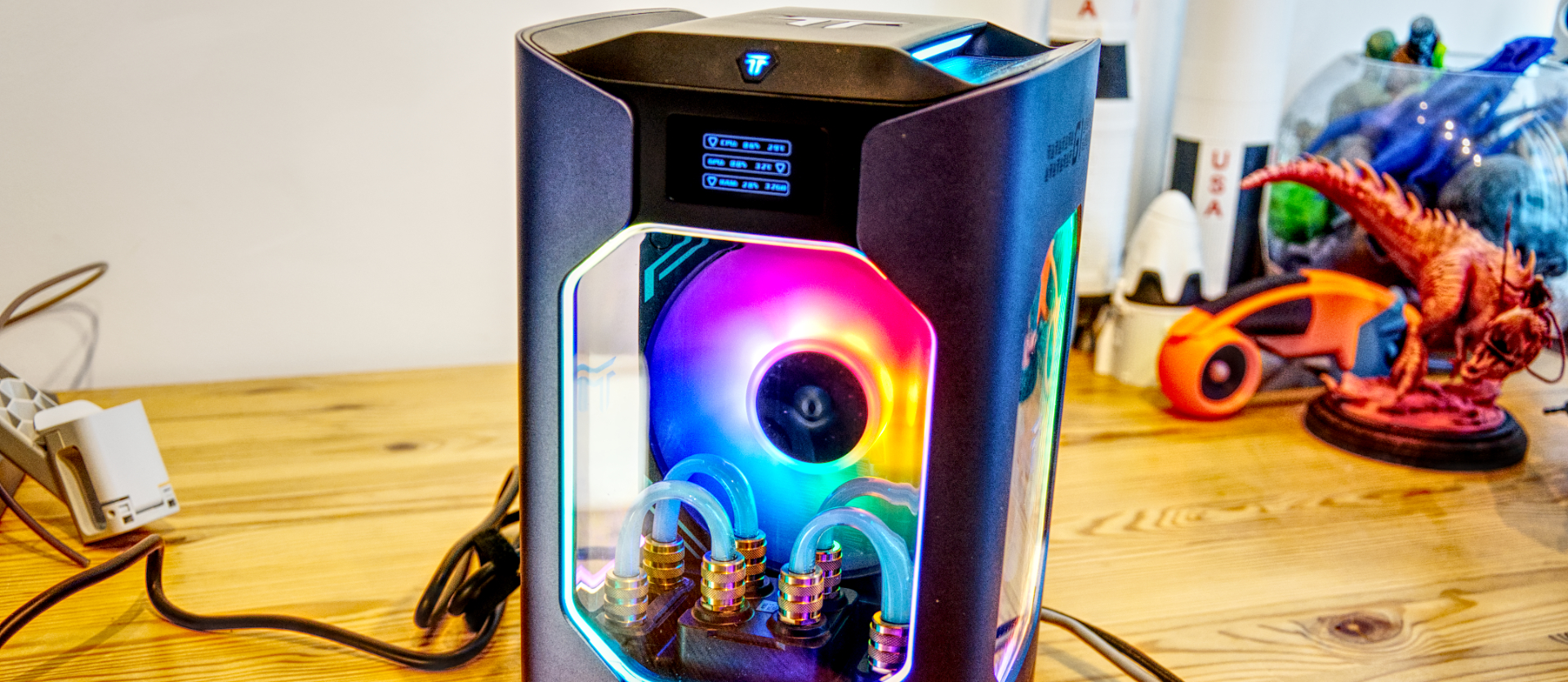
Geekom MegaMini G1: 30-second review
Lots of Mini PC makers have attempted to make unfeasibly small systems. But the Geekom MegaMini G1, a collaboration between Techno and Geekom, throws that presumption out of the window from the outset.
This uniquely styled mini tower features an RGB lighting array and a windowed alloy body where you can see a 120mm fan and water cooling in operation.
Built around an Intel 13th-generation i9-13900H twenty-thread processor and 32GB of DDR5, this is a powerful system that comes with plenty of ports for connecting all manner of external devices.
These include USB 3.2 Gen 2, Gen 1, USB 2.0 and Thunderbolt. However, it also has an OCuLink port to connect an external GPU.
However, depending on the GPU performance you need, the Geekom MegaMini G1 also has a discrete Nvidia RTX 4060 8GB that offers dramatically better graphics than the integrated GPU in the i9-13900H.
A caveat to this internally mounted GPU is that it can't be upgraded, and to power it, the PSU on this mini PC is rated to 330W, giving an idea of how much power it can consume.
Those thinking this might look spectacular on the edge of the desk should be aware that the cooling system is noisy when it's working hard. And, annoyingly, this is only available through a Kickstarter, and Geekom wants a commitment of $1800 for the model reviewed here.
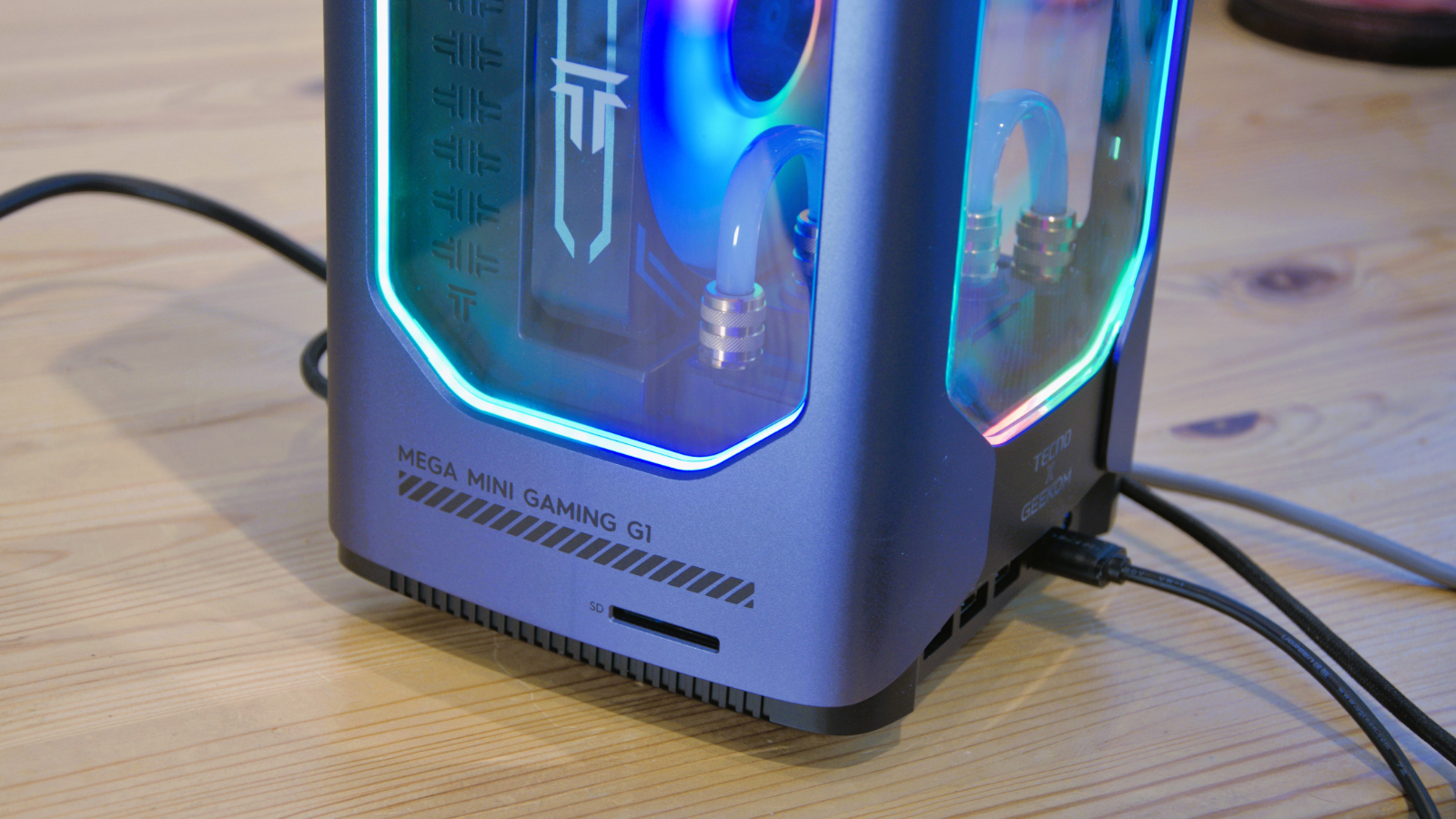
Geekom MegaMini G1: Price & availability
- How much does it cost? From $1599
- When is it out? Available now
- Where can you get it? Kickstarter, ships in November
Geekcom is another PC hardware maker we can add to the list of those using Kickstarter for marketing purposes, for which it wasn't intended.
The Geekom MegaMini G1 Super Early Bird pledge starts at $1,599 for a machine with the Core i7-13620H processor, 32GB of DDR5 memory, and 1TB of storage.
The review hardware we received with the Core i9 processor and 2TB of storage starts at $1,799, and both machines come with the RTX 4060 8GB graphics card.
They did have a cheaper $1499 launch day special for the same spec as the cheaper model, but that ended after three days.
The obvious question most interested parties will wonder is if $1,800 fits this specification.
Geekom sells the GT13 with the same processor for around $1,000, and an RTX 4060 8GB is about $300. But alas, that hardware doesn't support OCuLink, so there is no way to connect the two.
A more comparable machine is the new Minisforum G7 Ti, which sells for $1,439 and has an even more powerful Core i9-14900HX and an RTX 4070 mobile GPU. That lacks OCuLink, so the graphics power cannot be enhanced.
Overall, both this and the Geekom MegaMini G1 are overpriced, probably hinting at the limited number of these companies expect to sell.
One cheaper option is the Minisforum UH125 Pro, which comes with an OCuLink port, and the Core Ultra 5 125H processor, for under $500. Even adding an external OCuLink box and the desktop RTX 4070 16GB would be cheaper than the Geekom MegaMini G1.
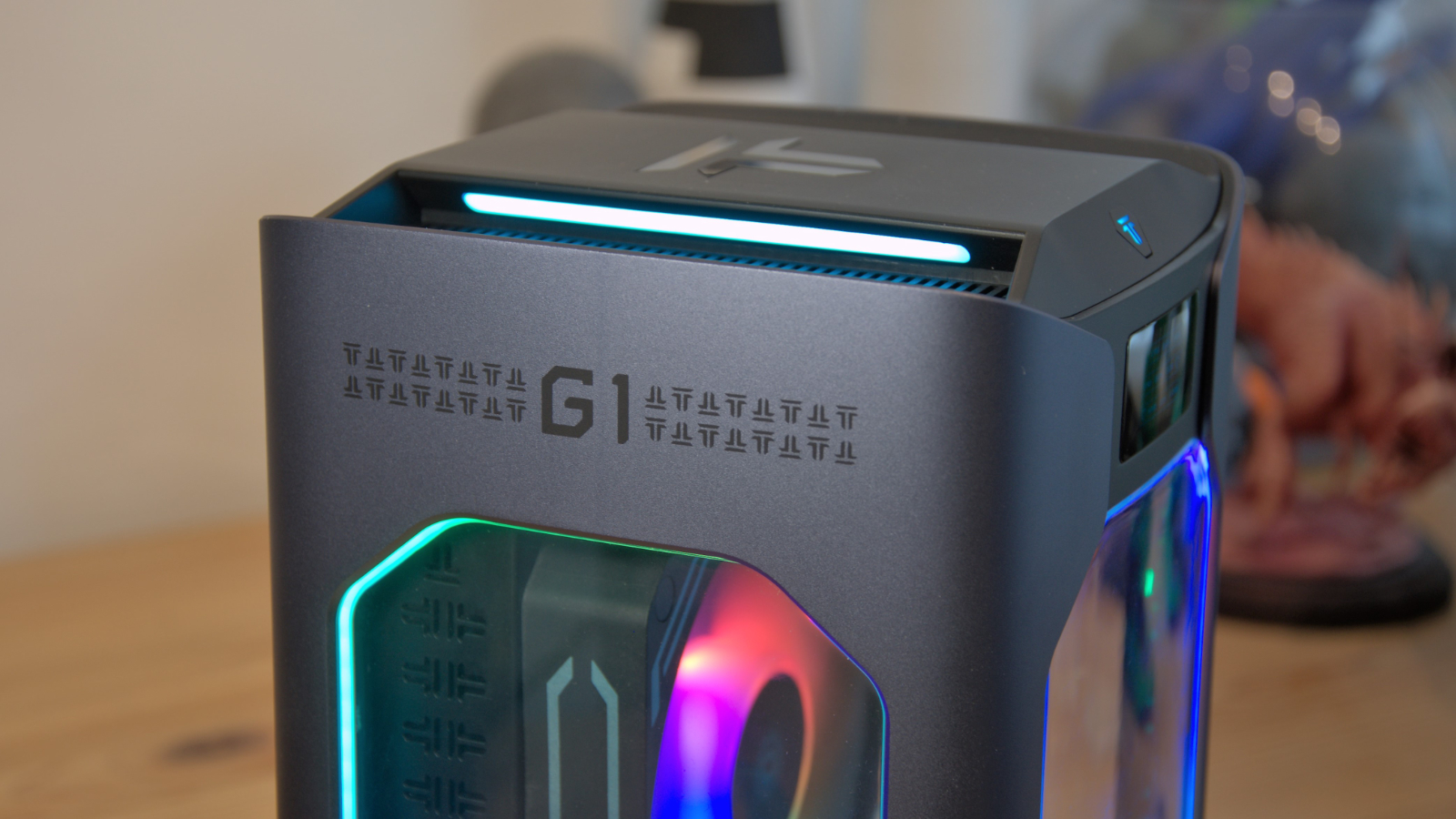
- Value: 3.5 / 5
Geekom MegaMini G1: Specifications
Geekom MegaMini G1: Design
- Unique styling
- Ports front and back
- Water cooling
- Easy internal access
To say that the Geekom MegaMini G1 is uniquely styled is an understatement. It resembles a miniature fairground amusement where prizes are randomly grabbed with a motorised claw.
Instead of fluffy toys succumbing to the claw, the G1's clear sides reveal a 120mm case fan rotating and clear pipes coming from a water cooling system, all framed by an RGB lighting show.
At about a foot tall (255mm) and weighing nearly 4kg, this is easily one of the biggest 'mini PC' designs we've seen, but it still manages to be smaller than the smallest desktop PC enclosures.
The sheer mass of this device means it won't easily be toppled over on the desk, as most of the weight is in the lower section.
With the exception of a side-mounted SD card reader, all the ports are either on the front or back. The front has four USB Type-A ports, two each of 10Gbps and 5Gbps, and a single 3.5mm audio jack.
But this selection is a taster for it on the back, which includes more USB, dual HDMI, Thunderbolt, a 2.5GbE LAN port, and the all-important OCuLink port.
Someone reading this now asking why it didn't get two 2.5GbE LAN ports, but it is a relatively inexpensive enhancement to convert one of the USB 3.1 Gen 1 ports into another or even a 5GbE connection.
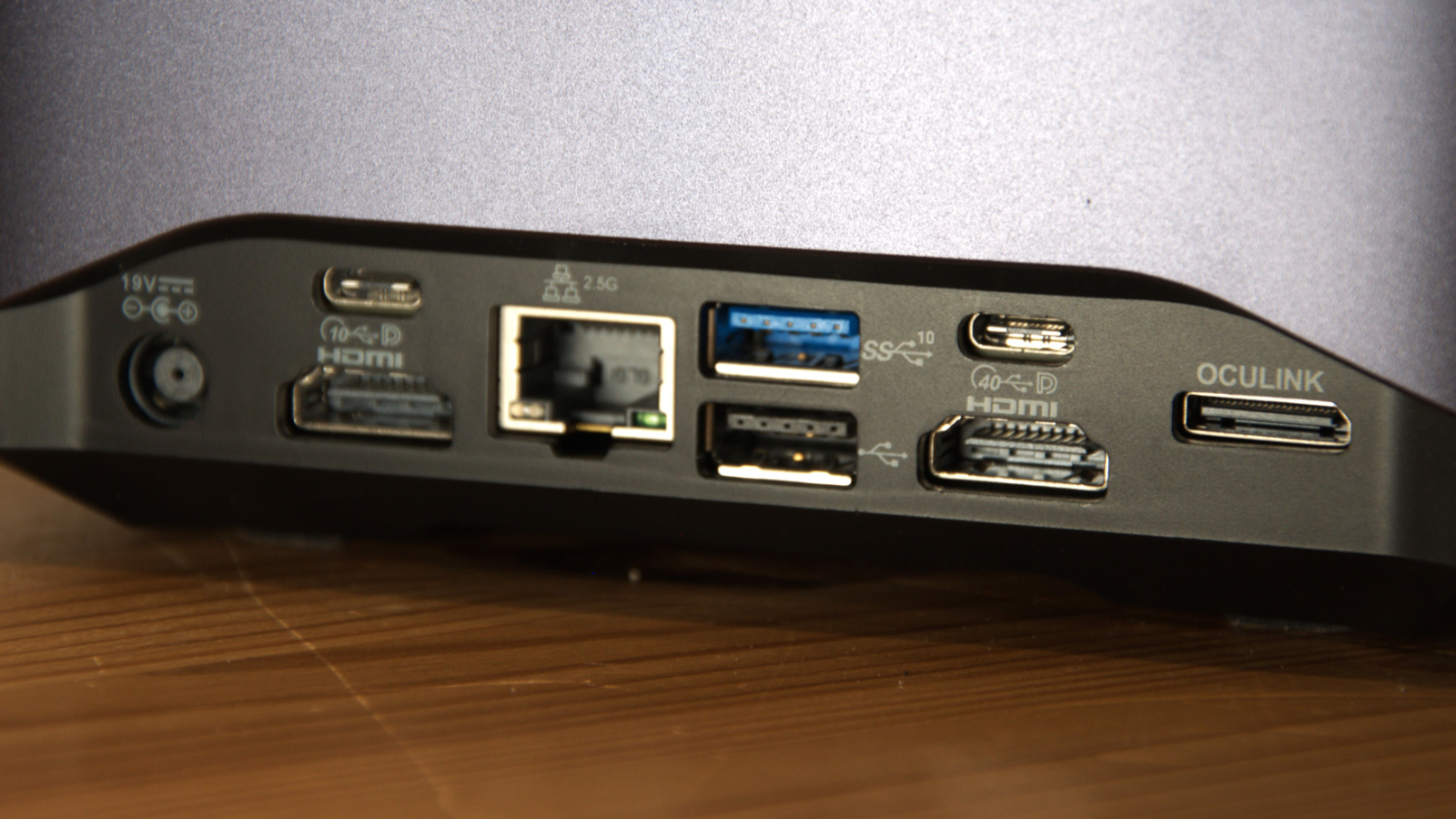
The water cooling solution is a sealed system, and in our review hardware, a significant number of small bubbles would cycle around when the machine was running. Typically, water-cooled systems have a gas trap at some point to remove these, as they lower the density of the water, but not here. Perhaps it helps to see the water moving around for those who need proof of these activities.
Access is from the underside and is exceptionally easy to do. Once four rubber feet are removed and the screws under them removed, the motherboard is fully available for memory and storage changes. Our only disappointment here was that the second unoccupied M.2 slot is only 2242-sized and not 2280 like the one already fitted. Two 2280 slots would have been wonderful, but you can add more storage with the 2242 slot.
Both DDR5 SODIMM modules are changeable, and this system should be able to accept 48GB modules to give a total of 96GB.
The graphics card is not accessible, and it is most likely a special layout card to fit elsewhere in the case. However, the OCuLink port allows other GPUs to be connected externally for those who want even more graphical power.
This is a well-constructed system that feels solid and not remotely flimsy, like some Mini PC designs. The fan can be a little loud when the graphics card is being put through its paces, but it's much less obtrusive in normal operation.
- Design: 4 / 5
Geekom MegaMini G1: Features
- Intel Core i9-13900H
- Nvidia RTX 4060 8GB
The Core i9-13900H is another from the Raptor Lake product cycle that has given Intel so much trouble, but the one in our test system ran flawlessly throughout our testing.
Launched in Q1 of 2023, the Core i9-13900H is a 13th-generation part that the 14th-generation i9-14900HX has since superseded.
This chip has six performance cores and eight efficiency cores. The performance cores are hyperthreaded, allowing up to twenty threads of processing.
The baseline power for this CPU is 45W, which can jump to 115W in turbo mode, where the clock speed can hit 5.4GHz.
This chip is ideally suited to this hardware because its microprocessor PCIe revision is 5.0, and with the chipset's PCIe 3.0 support, it has up to 28 PCIe lanes.
Eight lanes will be used by the graphics card, but the rest are available for the USB, LAN, Thunderbolt, and OCuLink.
Given that a single USB 3.2 Gen 1 only needs a single PCIe 3.0 lane or a quarter of a PCIe 5.0 lane, there is plenty to go around.
Where things start to get even more interesting is the graphics department since most Mini PCs use laptop processors, such as the Core i9-13900H used in this design.
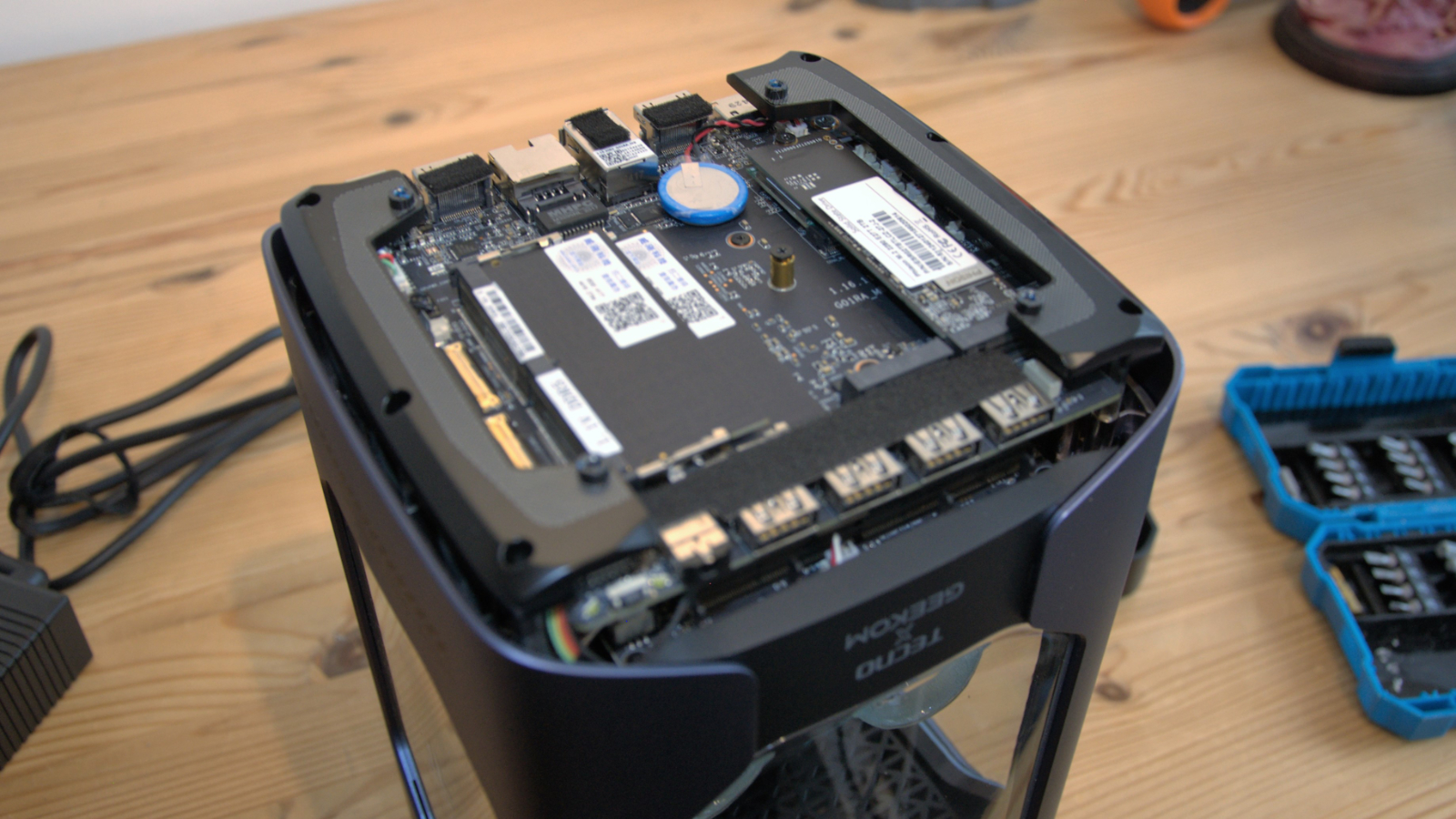
Typically, laptop makers will describe a mobile version of a GPU as if it were the desktop model, which it generally isn't.
Without the limitations of battery power that wasn't necessary in the G1, and amazingly, the GPU is the full desktop version of the RTX 4060, with 3072 unified shaders, 96 TMUs and a bandwidth of 272GB/s over its 128-bit bus.
Before getting carried away, it's worth saying that the 8GB version of this card is the one that is generally agreed should never have existed since the RTX 3060 offered a 12GB model.
That said, even with 8GB of GDDR6 memory and a restricted memory bus, this card's agility makes the integrated Intel ARC look like it is wearing concrete overshoes.
It offers the user high-performance 3D rendering with raytracing at decent resolutions and detail levels, and it can be utilised by design tools like Blender and Fusion 360.
And, if that's insufficient GPU power, an externally mounted GPU of an even higher specification can be attached using the OCuLink port.
I'd mention some of the other ports, but these are merely bit-players when compared to the CPU and GPU in this platform, which elevate the G1 to being a low-end workstation.
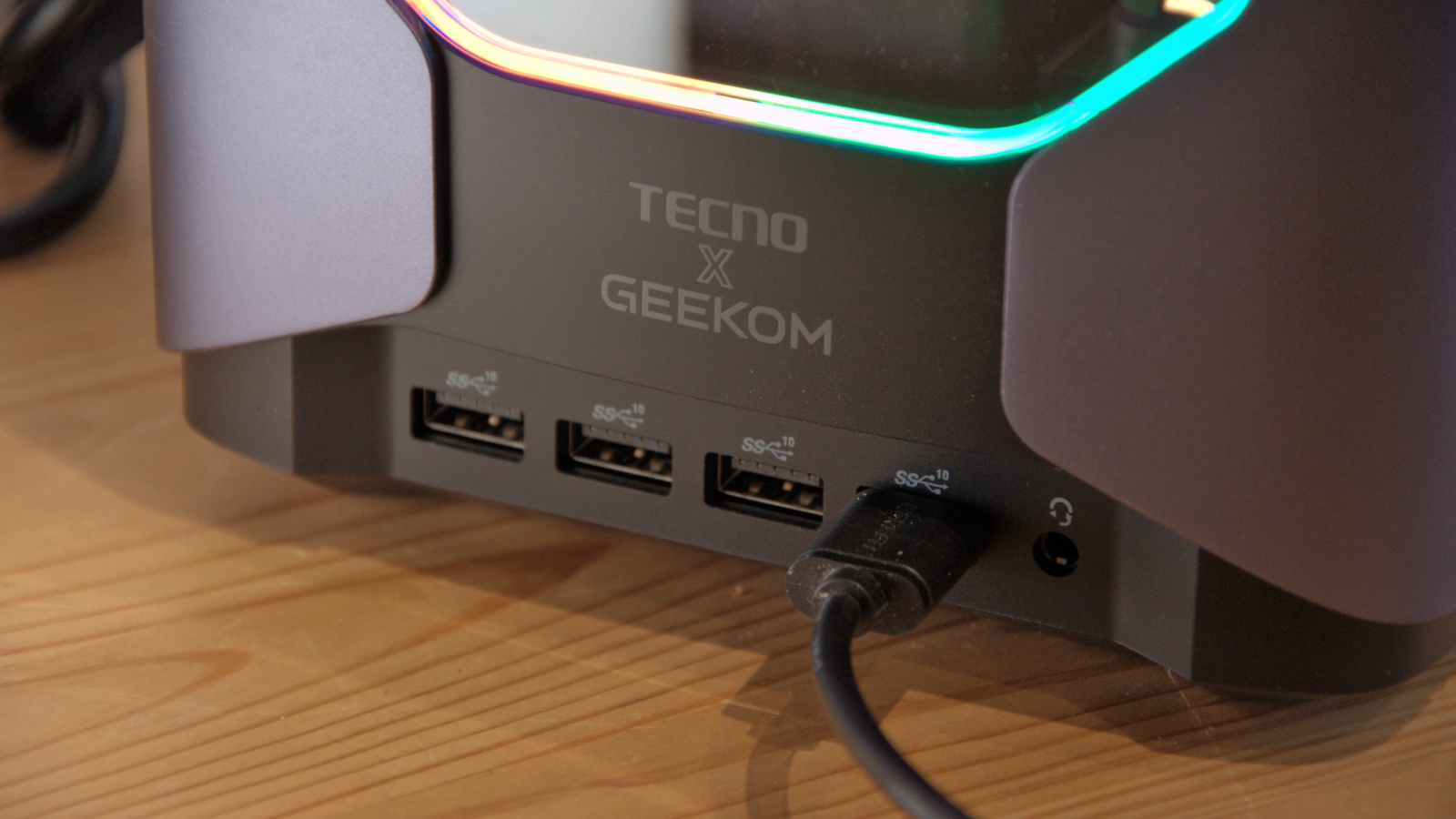
- Features: 4 / 5
Geekom MegaMini G1: Performance
- Powerful CPU
- RTX 4060 8GB
By our good fortune, we recently covered the Lenovo ThinkStation P2 Tower, a machine that uses a desktop processor, the Core i9-14900K, and the same Nvidia RTX 4060 8GB.
Surely, based on the desktop versus previous generation laptop processor equation, these can't be comparable, can they? Disturbingly for Lenovo, the G1 is the little workstation that could.
Obviously, the places where the G1 takes a beating are related to the CPU. The desktop version of the Core i9-14900 has 24 cores, and eight of those are performance cores, over the i9-13900H with six performance cores. But it also has more efficiency cores, giving it twelve extra threads over its mobile counterpart.
This is most evident in the Blender CPU score, where the i9-14900K has slightly more than twice the power. But, this is where the G1 fights back, with the same graphics card in many tests, it's able to trade blows effectively and even manages the odd victory.
If you used the G1 to render in Blender using the GPU, not CPU rendering, the difference between the P2 Tower and the G1 would be negligible.
What's worth noting is that with the tested specification, the P2 Tower is close to $2500, a significant chunk of change more than the G1, which still isn't the cheapest option for this level of performance.
The argument that the P2 Tower is worth the extra because it has accessible PCIe slots, enabling a more powerful discrete GPU, is undermined by the limited space in that machine. There is insufficient room to accommodate an RTX 4080 or 4090, as those are typically longer than the 23cm available in that chassis.
In theory, and we never tested this, those cards could be externally mounted in an OCuLink external case and attached to the G1. And, while the OCuLink technology might not offer the same performance as a PCIe 8x slot, it would be faster than the RTX 4060 by some considerable margin.
Overall, the G1 comes a plucky second in these curated results but demonstrates that it can be a modest workstation if required.
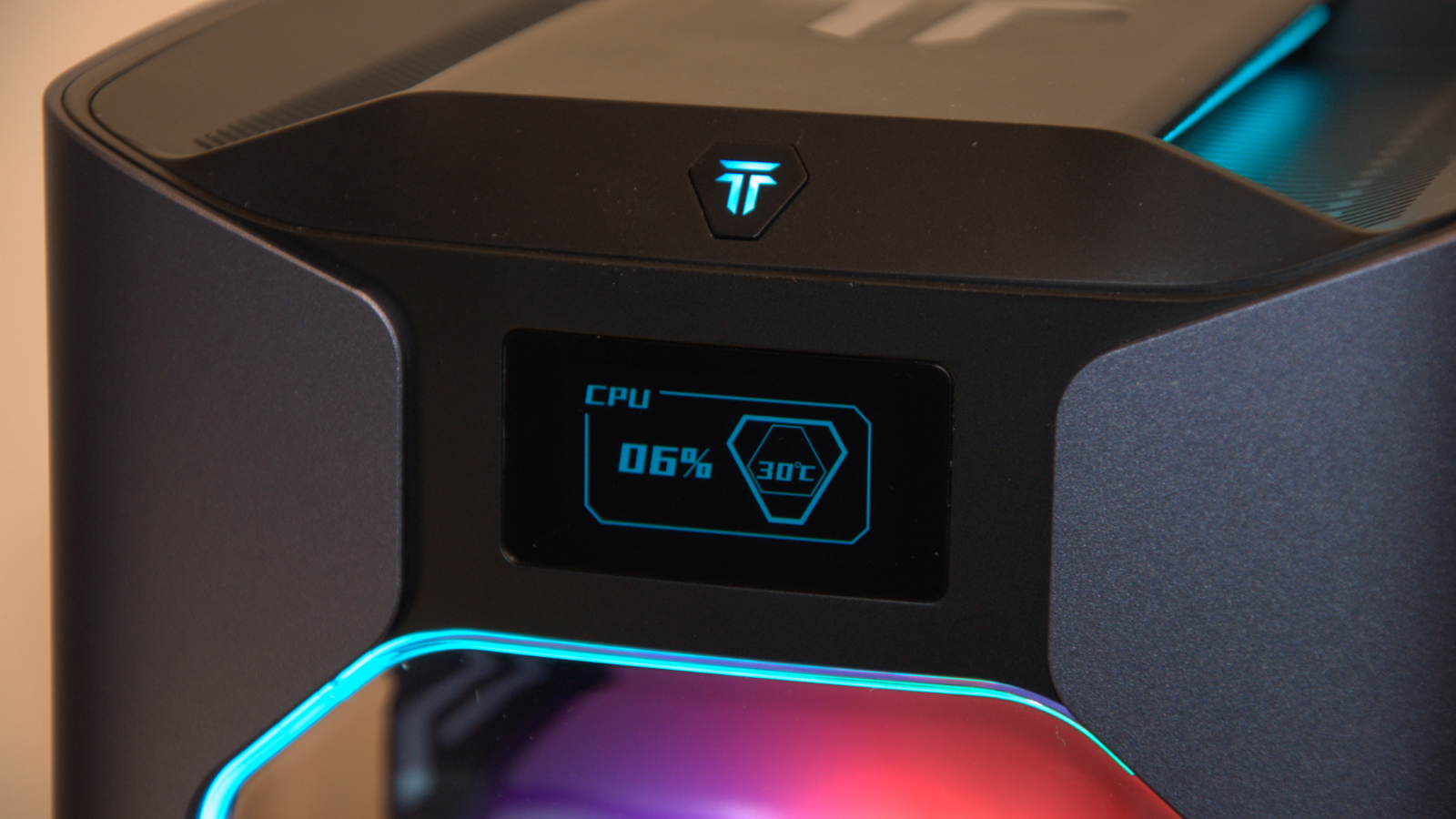
- Performance: 4/ 5
Geekom MegaMini G1: Final verdict
It's easy to look at this machine and its rainbow lighting and dismiss it as something made for gamers that would have no place in an office. But that would entirely miss the point of why this is such a revolutionary machine.
Glossing over the pricing and promotion via Kickstarter, neither of which is ideal, this is a brilliantly conceived small system that delivers more performance than was expected.
It should come with some software utilities to turn the lighting show off, and better manage the fan noise, but the machine has real potential for those who need a powerful small system that doesn't take up much desk space.
Hopefully, Geekom will shift enough through Kickstarter to make this a retail option, and with volume production, they will reduce the price.
Should you buy a Lenovo Geekom MegaMini G1?
Buy it if...
Don't Buy it if...
Want to power-up productivity on the go we reviewed the best mobile workstations.







